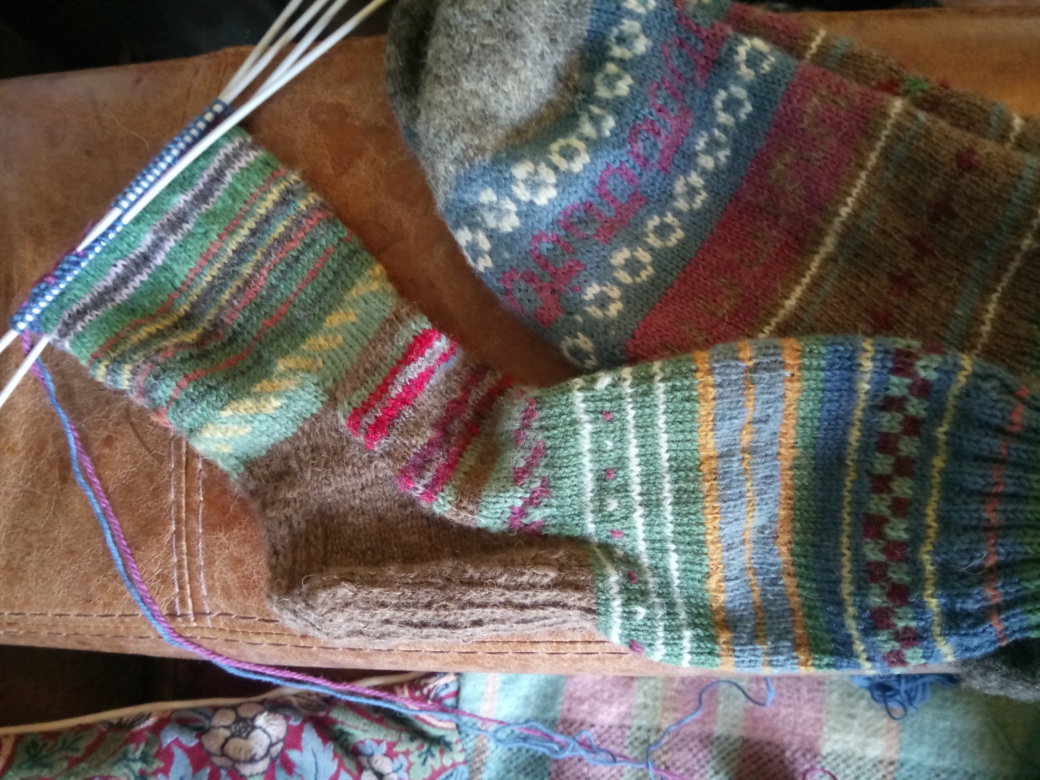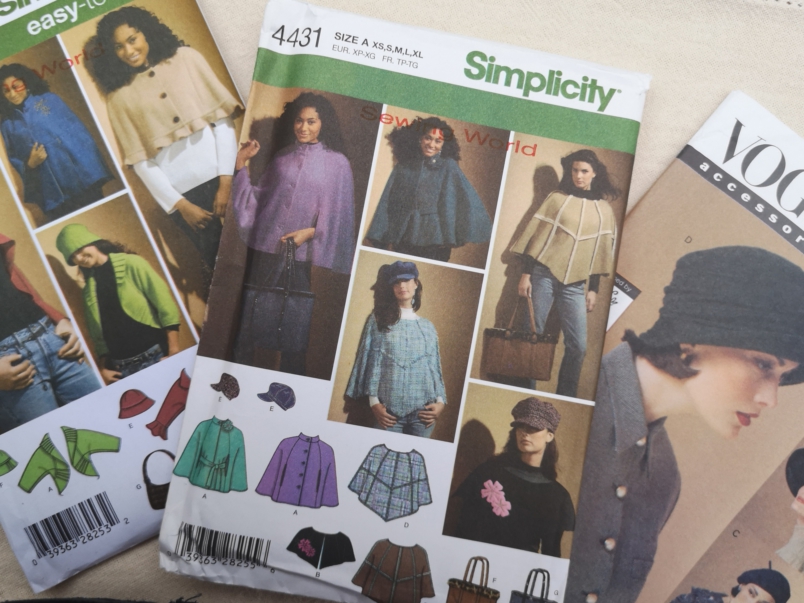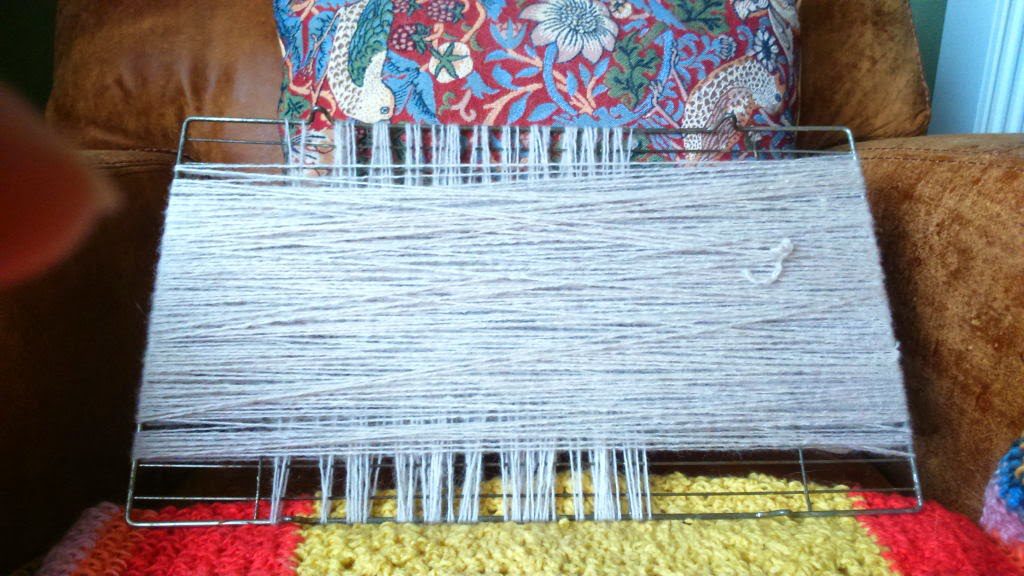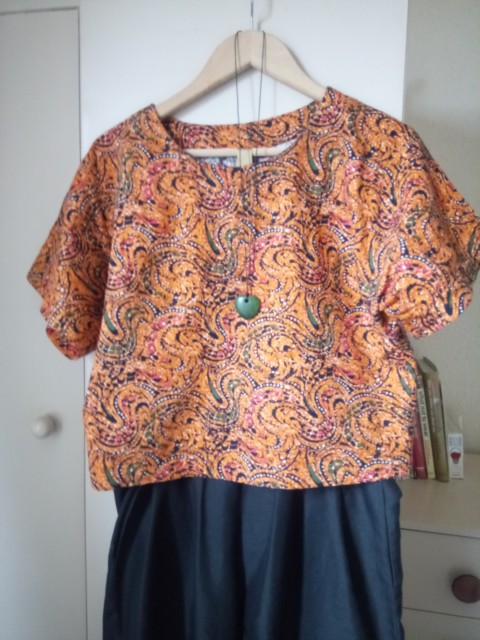Zero Waste Week has had me thinking about many aspects of zero waste. My focus has recently been on the waste and pollution associated with clothes. Now, fabric, trimmings and yarn waste, and the idea of making clothes from scraps, is my focus.
Fabric waste, in particular, is a huge problem for the fashion industry, and if you’ve been a long-term crafter you’re likely to have built up a considerable waste pile. Stash is the word most used by crafters, and stash-busting is a big topic of conversation amongst the crafting community. Like last time, I’m taking a make, mend or buy approach. Whether you are a committed textile crafter, beginner or occasional crafter, or a non-crafter/buyer, I have some ideas for you here.
For the committed crafter; click here
For the beginner or occasional crafter; click here
For the buyer; click here
For the Committed Crafter: Make Clothes From Scraps
This could include:
- Making clothes from more than one fabric or yarn (multi-fabric, multi-colour)
- Making clothes from a single fabric or yarn (generally smaller items)
- Unravelling yarn, and picking apart clothes (recycling)
- Making yarn and fabric from very small scraps (ultra recycling)
Making Clothes From More Than One Fabric or Yarn

I’ve had this sewing pattern for years and have been wearing a tunic top made from it for years. I purposely bought two different fabrics to make it the first time round, buy my focus wasn’t on stash busting at the time. Now I have two different smallish remnants in my fabric stash that I haven’t known what to do with, and re-using this pattern seems ideal. Like most sewists I’ve ended up with largish scraps, so it’s occurred to me that with a little imagination, they could be put together to make one garment. Say, you might make the sleeves from one fabric and the bodice from another.
Compliment or Contrast?
I have a tendency to go for fabrics that compliment each other because they are similar in some way. For instance, similar colour ranges or hues or a similar pattern type can look good together. That’s just my taste because I don’t seem to suit very obvious contrast and clashes. Everyone is different though: taller people can often carry off contrasting multi-colour quite well. Being of diminutive statute, that’s definitely not me.
If you want some contrast, but you’re not sure if it would suit you, try contrasting just collar and cuffs for instance, or in an accessory. Accessories are where I can get away with more contrasting colours.
Multi-colour Medley

For knitters, crocheters and weavers who are making the fabric itself the obvious choices would be Fair Isle knitting, crochet medallions and granny squares, intarsia knitting, stripes and tweed. The possibilities are many and all these styles are ideal for using up yarn stash. The smaller the item (usually accessories), the more likely you are to have enough yarn to go together and have to buy little or no more. Think socks, hats, gloves, scarfs, shrugs, caplets and tank tops. Perhaps you would call these accessories, but I’m including them with clothes.
Making Clothes From a Single Waste Fabric
Here’s where smaller items, like those mentioned above, work best. If you want more colours, you could always add trims, a little embroidery or applique.

Unravelling Yarn and Unpicking Clothes

Here’s where you can get clever with recycling to produce scraps if you don’t have the right ones. It’s a good one for the frugal amongst you but tends to need a little experience. I’ve written a post about unravelling yarn: How to straighten unravelled wool: Frugal ways with old knitwear.
You could pick apart clothes and use the fabric to make something smaller, just like families used to do all the time. Adult clothes would be taken apart and made into children’s clothes, or men’s clothes into women’s. This is very much the make do and mend approach we saw during World War II here in the UK. It’s a way of life that we’ve drifted away from, though, in the era of cheap mass-produced clothes. Along with the loss of that lifestyle, a loss of skills has followed behind.
Making Yarn and Fabric From Very Small Scraps
We go deeper into scrap saving and using activities that you might think a little extreme – the preserve the committed crafter. In the past though, to do this you would just be considered an everyday crafter/homesteader because materials were harder to come by. We never produced materials on such a scale as now, and getting hold of them took more effort; usually a journey of some kind. I’ve digressed on how far do you go when using material scraps? When is scrappy too scrappy and just a little OCD? This was prompted by ending up with a pile of curtain material scraps that I couldn’t bring myself to throw away because I kept visualising log cabin patchwork creations, and the like. This conundrum (ideas factory?) but could be applied to any fabric.
When it comes to clothes, my guess is that there wouldn’t be many people who’d fancy a log cabin patchwork outfit, but strangely, I wonder if a little strategic patchwork here and there might make an attractive outfit. However, maybe you wouldn’t want to end up being known as ‘Patchwork Polly’. Unless that was meant in a flattering way because, somehow, you’d managed to ‘rock’ the look and it had become your signature creation. I don’t have any examples because I’ve not ventured down this route yet. Give me time….
What I have experimented with is mixing scraps into yarn. That’s waste from trimming off yarn ends when sewing into knitting or crochet, and waste from carding fleece for spinning. My approach has been to mix it up (my textile remnants, that is), make a trash batt, spin into yarn, knit/crochet, and Bob’s your Uncle, you have something new. I’m not pretending that this is speedy process: we’re talking slow fashion here.
For the Beginner or Occasional Crafter
You don’t need to make something out of many pieces of fabric or yarn scraps in a way that would frazzle your brain. Sustainable sewing can be fairly simple.

This top, made from an inexpensive remnant bought in a fabric shop, featured in my recent post about motivation tips to get you sewing for the first time, or sewing again. It uses a very easy sewing pattern. Fabric shops often sell fabric remnants fairly cheaply.
Maybe you could use a fabric remnant like this to sew a simple child’s dress. Fabric remnants, old duvet covers and table cloths are ideal for making children’s fancy dress costumes. For fancy dress, your sewing doesn’t have have to be perfect or the fabric high-end and expensive. In fact other parents will probably admire your homely touch, rather than a nylon-like shop-bought costume.
For the knitter or crocheter, stripes don’t tax the brain too much, but use up yarn scraps well. Small items are good for using a single colour, like hats, gloves, socks, shrugs and caplets, even textile jewellery, like wrist bands and chokers.
For the Buyer
Not everyone has the time to make everything, and what you like to make or produce may not be clothes. Being a crafter, though, I’m always tempted to get you thinking about it. You might find it quicker than you think to make the occasional item, and therapeutic too. If this could be you click here
When it comes to buying, most clothes in High Street shops are made from new fabric which creates a huge amount of waste. So this is the problem we are facing.
FastCompany says:
Industry statistics on fabric waste are appalling. The average fashion house discards 4,500 swatch cards each year. Some 50 percent of fabric waste is not biodegradable. The textile industry is the fifth largest contributor to CO2 emissions in the U.S.
Some designers are taking this problem on board, and are now making clothes from scraps their unique selling point. Zero Waste Daniel is making stylish clothes which were once scraps on a factory floor. They patchwork together t-shirting scraps and make shrugs from t-shirt yarn. Celebs are making clothes from scraps cool. Emma Watson is making the headlines wearing a top made of leftover scraps. The price tag of a Zero Waste Daniel top is above that of the High Street as you might be looking at £45/60 dollars for a t-shirt. Like most things, though, how affordable it is depends on how much money you have. On the other hand it’s helped by buying fewer but better clothes.
Clothes from scraps on the High Street or in the shopping centre or mall are hard to find at the moment, but I hear that John Lewis, and other stores such as H & M, are buying back old clothes in return for shopping vouchers, for instance. The clothes are either re-sold elsewhere, mended for resale or recycled into new clothes. I’ve not been able to find any information where they are resold, and whether anyone is buying them. I do wonder, though, whether the resale idea will suffer from the same problem that donating to charity shops is creating. There are simply too many donations and not enough buyers. We are overwhelming charity shops with our donations who then sell them overseas, flooding the markets of poorer countries with our clothes, and as a result their own textile industries are suffering.
We come back round to the buy ‘fewer but better’ and the ‘no new clothes’ philosophy. Businesses will only make reselling and recycling the way to combat the problems of fast fashion if people buy fewer new clothes and enough people are buying secondhand or recycled.

